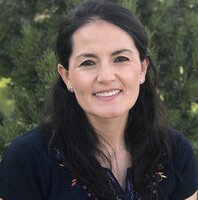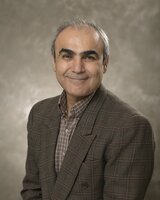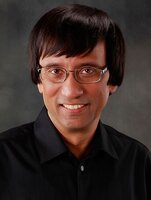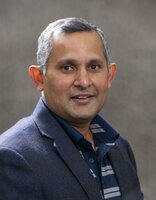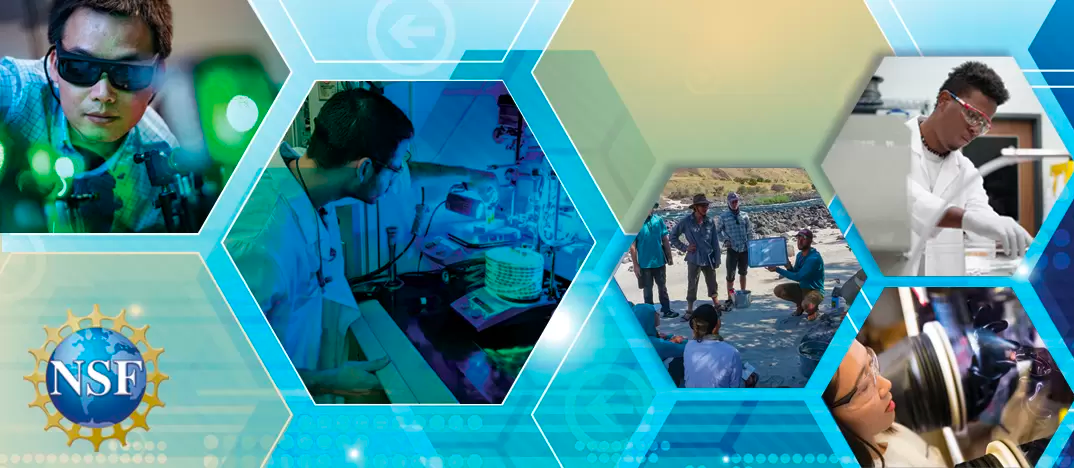
A new research center at the University of Illinois Urbana-Champaign will create whole-cell models that promise to transform our understanding of how cells function. With cutting-edge imaging and simulation tools, the center will advance the study of healthy and diseased cells; accelerate research into gene expression, metabolism, and division; and share science with communities of all ages through a partnership with the popular computer game Minecraft.
The NSF Science and Technology Center for Quantitative Cell Biology will be at the Beckman Institute for Advanced Science and Technology and supported by a $30 million U.S. National Science Foundation grant, the agency announced on September 7. This center is one of four Science and Technology Centers funded by a five-year, $120 million NSF investment. Principal investigators are Professor Zan Luthey-Schulten, the Murchison-Mallory Endowed Chair in Chemistry and co-PI Martin Gruebele, the James R. Eiszner Endowed Chair in Chemistry and a professor of physics.
“Now is the right time to start such a moon-shot effort,” Luthey-Schulten said. “The computational and experimental capabilities are just at the verge of where this effort is realistic to contemplate, and this is usually when breakthroughs happen. Whole-cell models are now at the transition point between what is possible already and what is not yet possible. This center will make that transition and move beyond it.”
A whole-cell model entails a full quantitative (i.e., numbers-based) description of the physical and chemical processes that define the state of a cell. This includes a cell’s shape, size, and microscopic ultrastructure; its composition of elements like metabolites, organelles, proteins, lipids, and nucleic acid; its full network of inner reactions and signaling; and its interactions with the outside environment.
"Hats off to Zan and Martin for their tireless efforts and leadership to attract this funding to our campus. The acquisition of Minflux microscope is a game changer in high-resolution imaging at molecular dimensions. Our campus researchers will benefit immensely from this technology," said Milan Bagchi, Deborah Paul Professor of Molecular and Cellular Biology and Director of the School of Molecular & Cellular Biology. Several School of MCB faculty will be involved in the center. Emad Tajkhorshid, J. Woodland Hastings Endowed Chair in Biochemistry, will be a team leader. Other MCB faculty include Kai Zhang, professor of biochemistry; Paola Mera, professor of microbiology; and Kannanganattu V. Prasanth, professor of cell and developmental biology.
Because cells exist in space and time, a true whole-cell model considers all spatial and temporal factors — the result is a fully simulated cell in four dimensions.
To create such models, the center will use cutting-edge imaging and simulation tools, including MINFLUX, a super-resolution microscopy technique that can accurately locate and track biomolecules (e.g., proteins) in living cells; label-free microscopy, which maps a cell’s chemical composition with light instead of dye; and cryo-electron microscopy/tomography, which provides information about a cell’s shape and the large, complex biological structures within it. CEM/CET measurements will be made possible through collaboration with the European Molecular Biology Laboratory.
The results will be integrated into 4D whole-cell models that can bring an entire simulated cell cycle to life on a computer. These models can be used to predict a cell’s response to mutations or environmental changes; situate cells in space and time; model genetic processes like DNA replication, transcription, and translation; and shed light on how cells respond to drugs and pathogens.
“My team will be collaborating with world experts to characterize the dynamics of the bacterial chromosome segregation machinery in nanometer resolution,” Mera said. “The ability to visualize the segregation machinery in action can provide answers to fundamental questions of cell cycle processes in bacteria that have remained obscure in the field. The beauty of this center is that we will collaborate to combine imaging information with genetic and biochemical data to model chromosome segregation and the complex regulation of the bacterial cell cycle. This information can be transformational for the design and development of more effective antibiotics,” she said.
Prasanth’s lab will contribute to “understanding the intracellular dynamics of macromolecules, such as RNAs and proteins, enriched in specific sub-nuclear domains during normal cellular processes and under various cellular stresses,” he said.
The Kai Zhang lab will use Minflux super-resolution imaging to investigate assembly and interactions between supra molecular complex and organelles in cells.
Models developed through the center will be shared with the scientific community, industry partners, policymakers, and the public. Outreach opportunities include a summer school program; professional development seminars on topics from inclusion in STEM fields to science communication; and Cena Y Ciencias, a series of Spanish-language family science nights hosted by UIUC and its local school districts.
“Scientists trained in the center must understand how to collaborate in diverse teams with scientists from different fields, career stages, from diverse racial, ethnic, religious, and gender identities, and those with disabilities. They must understand how to prevent, identify, and address bias in the workplace to foster a culture of mutual respect and learning,” Luthey-Schulten said. “They must also be able to communicate their work to a wide variety of audiences, from industry specialists to elementary school children.”
To inspire the next generation of scientists, the center will partner with Minecraft, a 3D, open-world video game that gives players the ability to traverse, interact with, and manipulate their environment. Game players will be able to simulate and investigate a full living cell, resulting in an interactive and immersive learning experience.
“Educators can use this tool to teach many aspects of cellular life. We plan to improve the program to the point where cellular biology can be taught in computer labs across the world, akin to Ms. Frizzle and her Magic School Bus exploring microscopic cells,” Luthey-Schulten said.
Maintaining the center requires a collaborative perspective that draws on and directs many individuals’ expertise.
"The challenge to build functioning cell models is beyond any individual or even informal collaborative group. It requires a center structure to keep efforts on track and coordinated,” Gruebele said.
Because of the university’s unique confluence of researchers in cell biology, cellular biophysics, chemistry, biomolecule structure and dynamics, super-resolution imaging, and more, Luthey-Schulten and Gruebele’s collaborators are affiliated with 10 campus departments and research institutes including the National Center for Supercomputing Applications and the Carl R. Woese Institute for Genomic Biology. External partners include the University of Maryland, Baltimore County, University of Texas at Rio Grande Valley, and Fisk University, which are all minority-serving institutions; the KTH Royal Institute of Technology; Stockholm University; Harvard Medical School; EMBL Heidelberg; the University of Groningen; the J. Craig Venter Institute; NVIDIA; and Abberior Instruments.
Editor's notes:
This project, titled “Science and Technology Center for Quantitative Cell Biology,” is supported by the National Science Foundation under EPSCoR award number 2243257. It is part of a multi-award gift. For more information about this and other funded proposals, please visit https://new.nsf.gov/news/120-million-funding-create-4-new-science-tech-centers.
